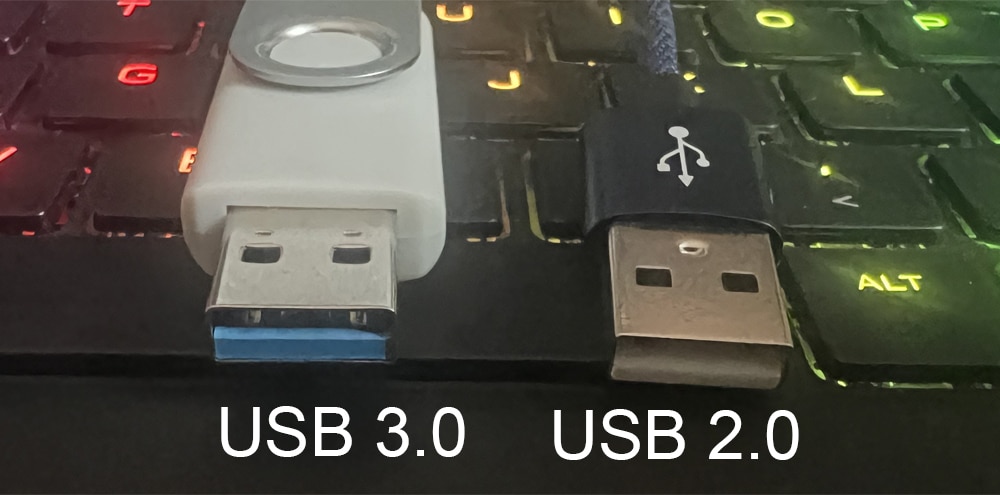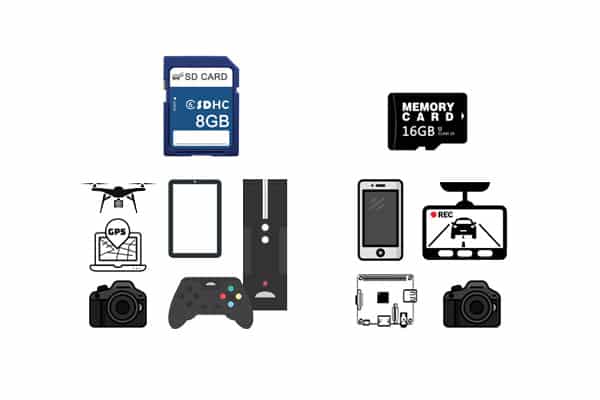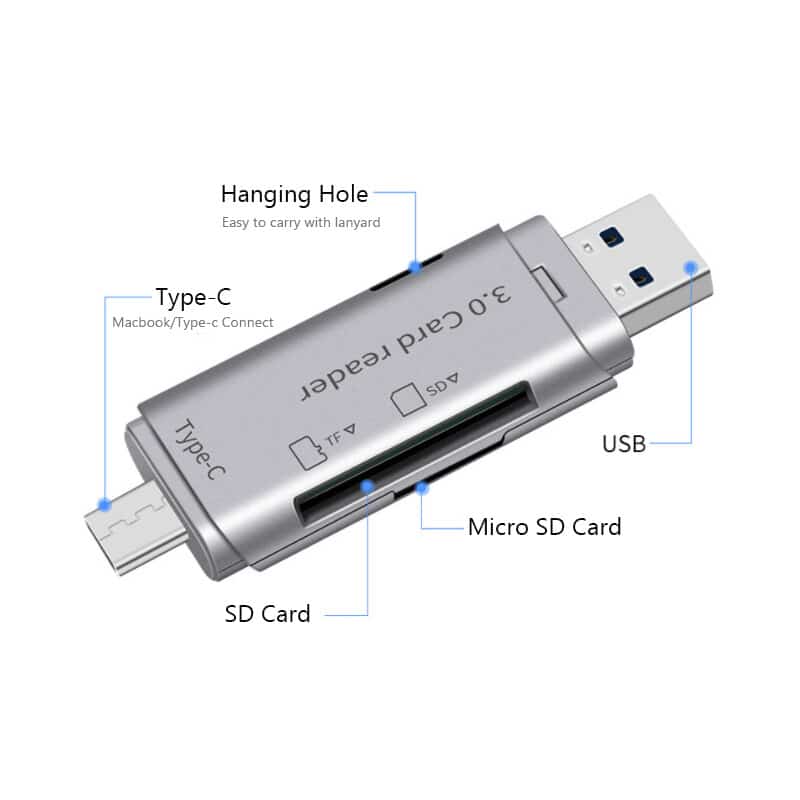Latest Posts
The Past and Present Life of USB-C Interface from, Tpye-A, Tpye-B to Tpye-C and the differences of them.
As a transmission standard, USB interface has always been the main data transmission way when using personal computer.
It depends on this standard transmission mode from minuscule USB flash drive to astonishing volume mobile hard disks.
Unified interface and transport protocol are the main way of changing date and information except the internet.
We can say that the USB interface is one of the cornerstones, which means today’s personal computer bring efficient life. The transmission standard experiences generations change, from the initial USB Tpye-A to today’s Tpye C.
There are various differences among the same USB Tpye C interface. What secrets do they all exist?
The Past and Present Life of USB-C Interface
USB Tpye-A
The interface of USB Tpye-A also named USB Standard-A is the standard initial design, which uses a flat rectangular shape.
Tpye-A interface is mainly used for principal machine, including desktop computers, laptops, game consoles, media players, etc.. Meanwhile, it has different USB standards (including USB 1.1, USB 2.0 and USB 3.0, etc.).
They uses the same USB Tpye-A design, which means that they are compatible each other just using the identical USB Tpye-A interface.
USB Tpye-B
In general, Tpye-B connectors are typically plugged into the other end of a standard USB connection for peripheral equipment such as printers, telephones or external hard drives.
In peripheral equipment, USB connector is called the Type B mother head.
However, the shape and size of peripheral equipment are different, so there are various design of Tppe-B connector and their ports, such as for USB1.1 (or USB2.0) first.
The USB connector is mostly used as the initial standard of connecting l large peripheral equipment and computer. It also applies to MINI-USB (or Mini-B USB) interface and MICRO-USB (or Micro-B USB) interface for digital cameras, mobile phones and old portable drives, and Micro-USB 3.0 (or Micro-B USB 3.0) commonly used for mobile hard drives, etc.
Tpye C? The mainstream of next generation.
USB Tpye-C, also named USB-C, is a kind of hardware interface form of universal serial bus (USB). The biggest feature in appearance is that the upper and lower ends are uniformed. Which means that users need not distinguish the positive and negative sides of USB any more, compared with Micro-USB. Both sides can be inserted.
USB Developer Forum (USB-IF) released the USB Tpye-C Specification 1.0 which completed in August 2014. The specification is the same with USB 3.1. But in reality, USB-C devices do not necessarily support USB 3.1 or Power Delivery.
After releasing the specification of USB-C in 2014, many 3C equipment ,such as new Android mobile devices, laptops, desktops and even game consoles began to apply to this communication port .
The size of USB-C interface is 8.3×2.5 millimeter, Power transmission specifications, wire standards for direct current 5V, 5A, while connectors are 3A. The size of TPye-C interdace and connector is the same as Micro-B USB.
Which means that it is small enough to apply to most peripheral equipment. Compared with Tpye-C, the two ends of the USB cable are identical, allowing reversible plug direction.
USB-C has extensively used in many smart phones and tablet computer. Most new storage devices also apply toUSB-C ports rather than USB-B ports. Almost all devices that support USB 3.1 use the USB-C port
In addition, Tpye-C USB also allows two-way power supply, so except charging peripheral devices, if possible, peripheral devices can even charge host devices in turn.
Therefore, at present, what we lack is just the popularization of USB Tpye-C for peripheral device interface. Especially in the light and thin books, USB Tpye-C interface is almost their only choice, too thin fuselage makes it difficult to adopt USB Tpye-A interface. However, the USB Tpye-C interface can take into account both lightness and speed. Many users are unacceptable, but in fact it is only the trouble of carrying an extra adapter.
Like the newly released Huawei MateBook 13 ultra-thin notebook, it isa very thin, the thickest part is only 14.9mm. Its official weight is 1.3kg, and on the left and right sides of the fuselage provides a USB-C interface to support data transmission and charging, and a USB-C interface to support data transmission and DisplayPort external connection. Taking the lightweight fuselage, as well as the price and cost into account, it does not apply to the Tpye-A interface, which in return is a new lightweight version with a minimum of 4999 yuan (also a 13-inch lightweight Macbook air, also using the full USB-C interface equipment).
In addition, like what we said, nowdays, there is still room for peripheral devices to optimize for the support of USB-C interface. In order to bring convenience to users, it was very intimate that MateBook 13 gave a Tpye-C to Tpye-A connection for users, which solved the needs of many users for USB-A interface
The agreement of application and support
The USB-C specification can even be used for audio transmission in application, but at present it has not taken the place of the 3.5mm headphone jack on the computer.
Generally speaking, today’s USB Tpye-C interface is usually used to connect DisplayPort and/or HDMI Displays and Devices to achieve the work that only traditional HDMI or DP interface complete.
Once such a design is popularized, it means the completion of unified standardization, and many functions will no longer need to carry multiple transmission lines to complete in the future (but the reality is that the implementation and support of protocols and standards is a complex game process between manufacturers, so this vision still needs to wait. )
USB-C and USB 3.1
However, the most important of it is still as the data transmission mode, which include two transport protocols.
The default Interface Protocol of USB Tpye-C is USB3.1, its speed is 10Gbps twice of USB 3.0 in theory.
The biggest factor stopping the popularity of USB Tpye-C is that the traditional USB 3.1 Tpye-A interface still has considerable usage needs and better equipment compatibility (after all, existing peripherals will not become USB Tpye-C interface overnight)
However, USB-IF have already defined the USB3.1 Gen 1 standard as satisfaction the same interface and data signal rate as USB 3.0
Therefore, the speed of USB 3.1Gen1 interface is 5Gbps basically the same with USB3.0, while USB 3.1 Gen2 can achieve to 10Gbps twice of USB3.0.
Thunderbolt 3
The most useful USB-C transport protocol is probably Thunderbolt 3.
Because of the integration characteristics of two in one, the third generation Thunderbolt protocol can convey data at a bi-directional speed of 40 Gbit/s (20 Gbit/s + 20 Gbit/s, especially for external high-speed networks). And it can also be compatible with Mini DisplayPort device to directly connect Thunderbolt interface to deliver video and sound signals, whose high transmission speed rate can make Tpye-C interface play a more important role in the use.
The end
In short, USB Tpye C interface has the features of tinny, portable and high-speed transmission. It is performing an increasingly important part in the application of notebooks and electronic devices.
Today, we pursue efficient and fast life, high-speed transmission interface not only save an amount of time and cost, but spare a lot of time to do more things. Which is of great significance in improving users experience. USB Tpye-C has prosperous future as efficient and convenient interface. But Tpye-A and Tpye-B interfaces will continue to exist for a long time.










Leave a comment